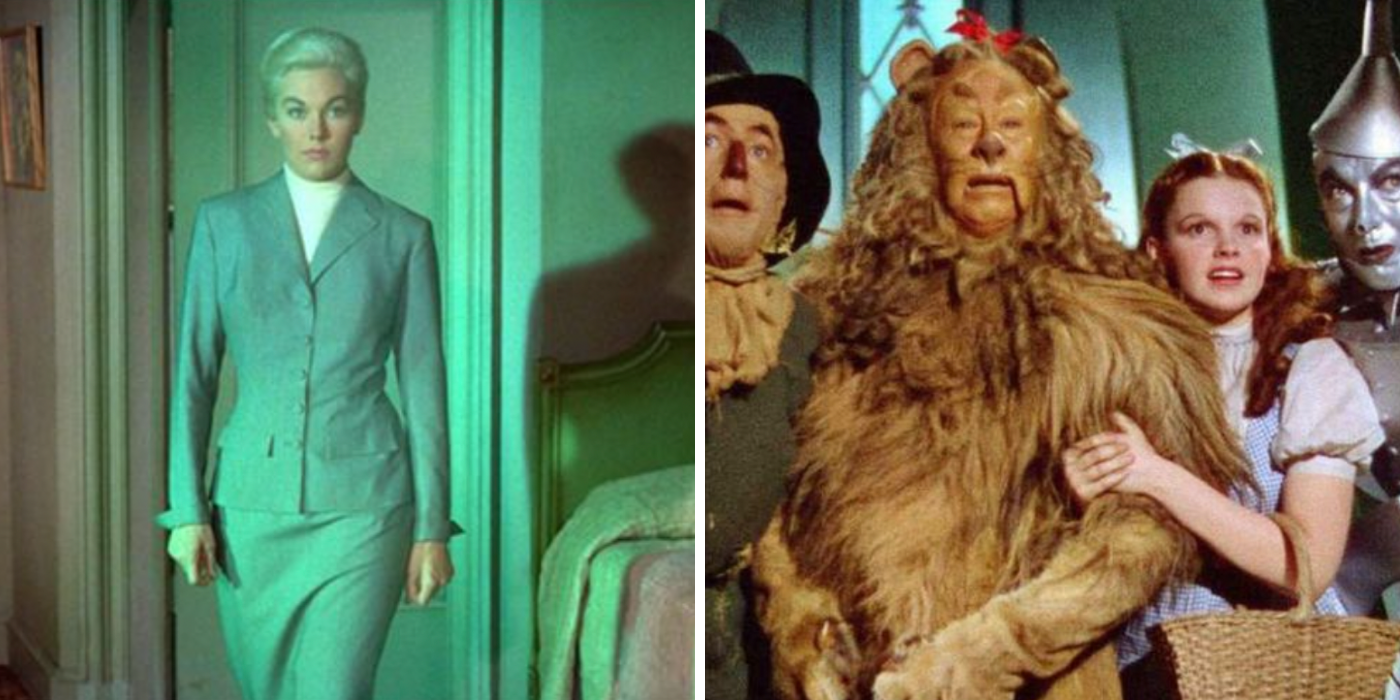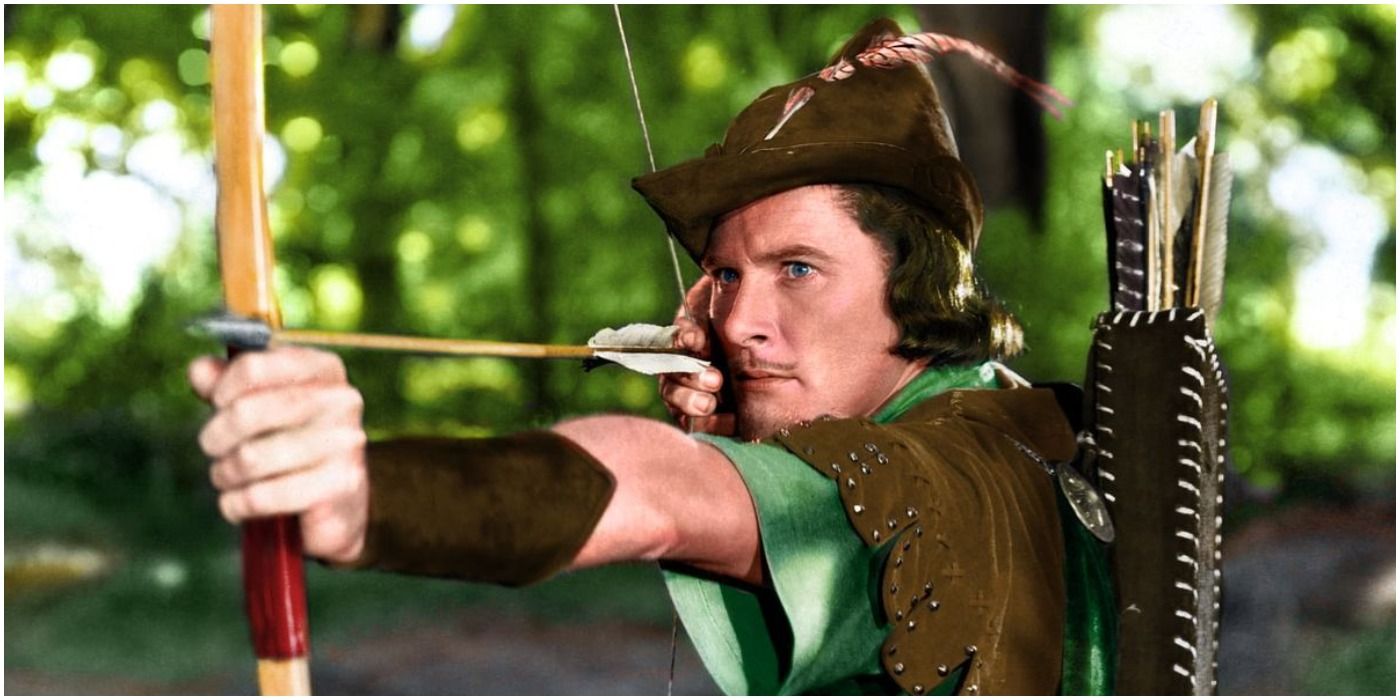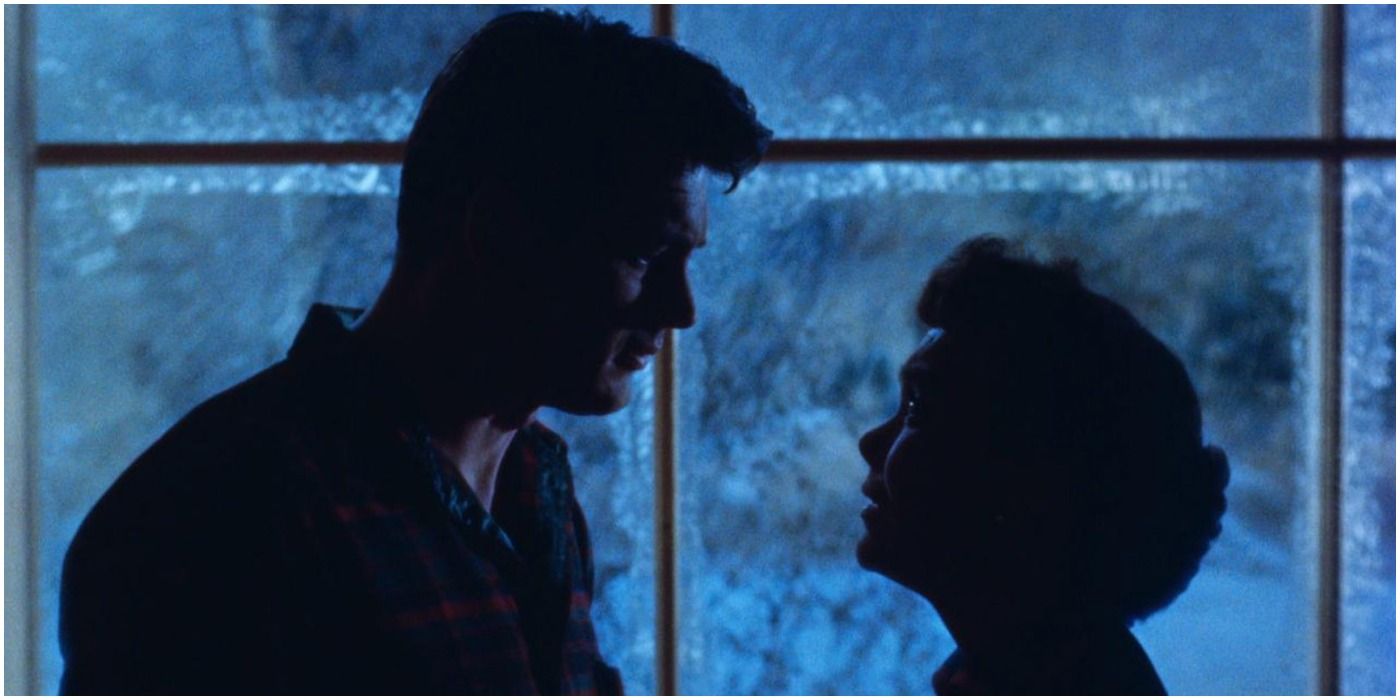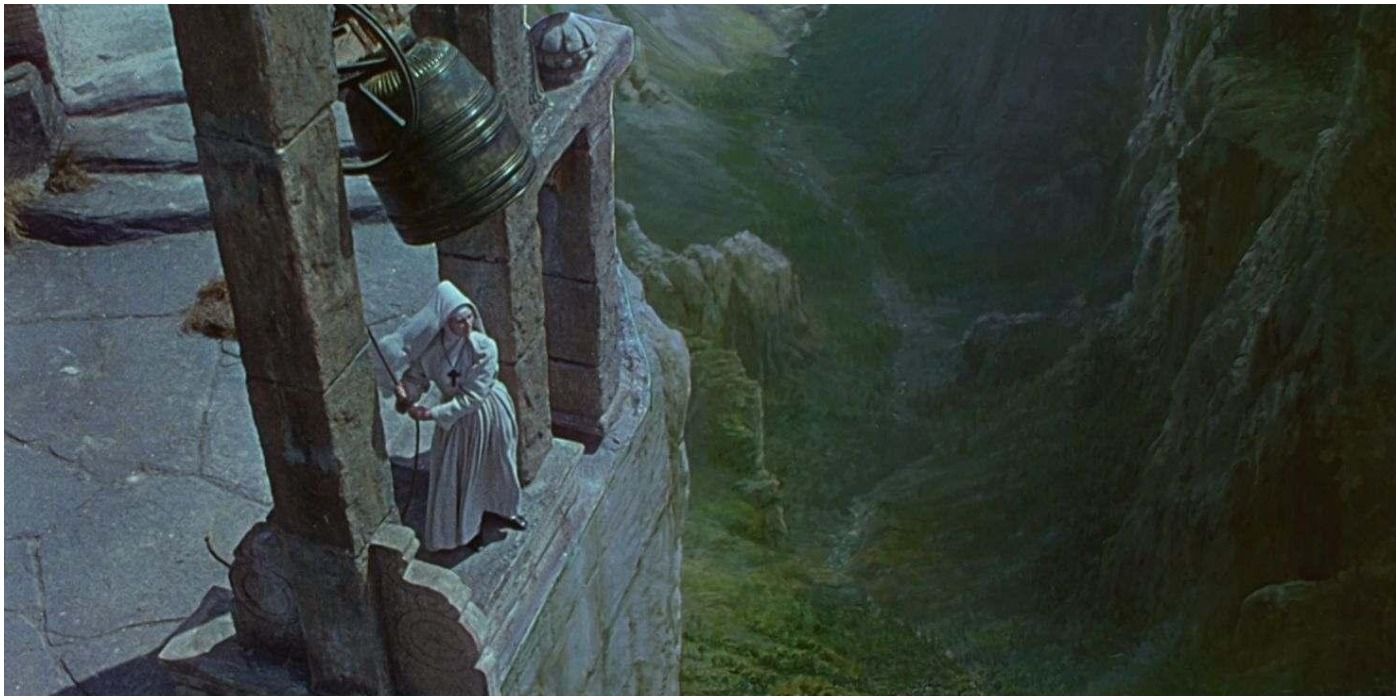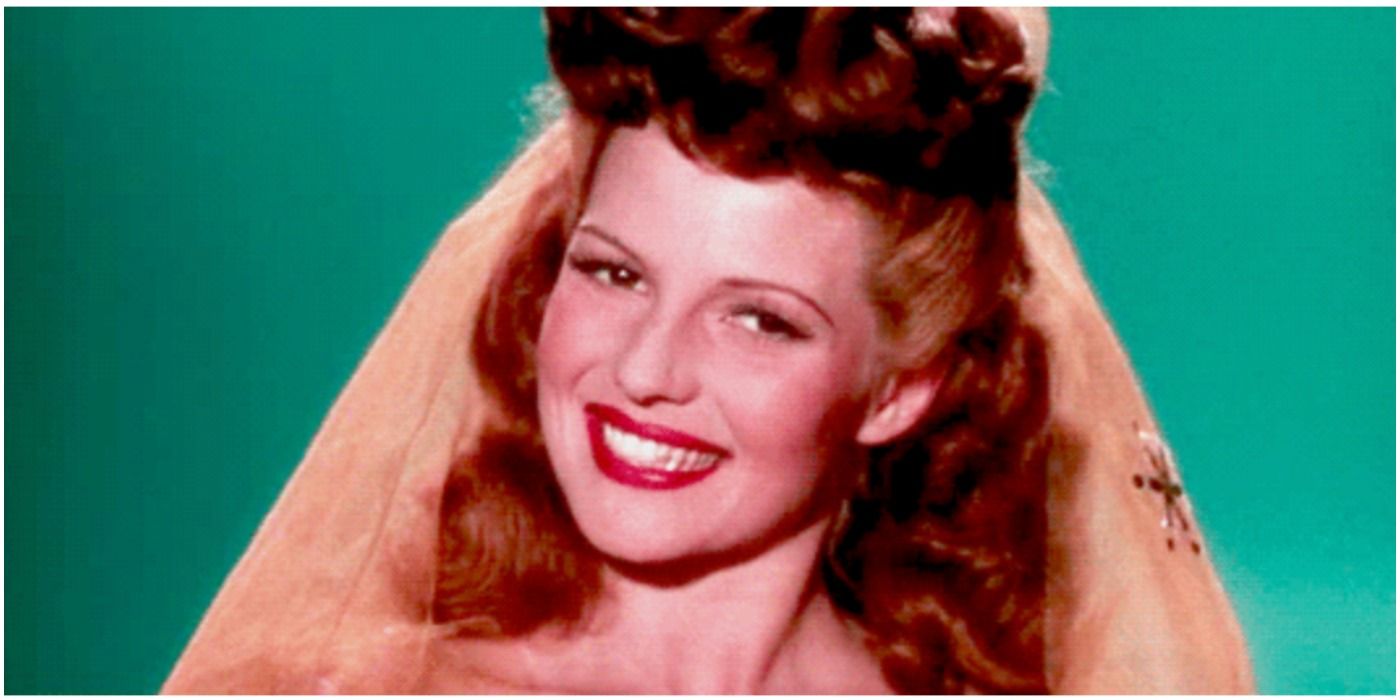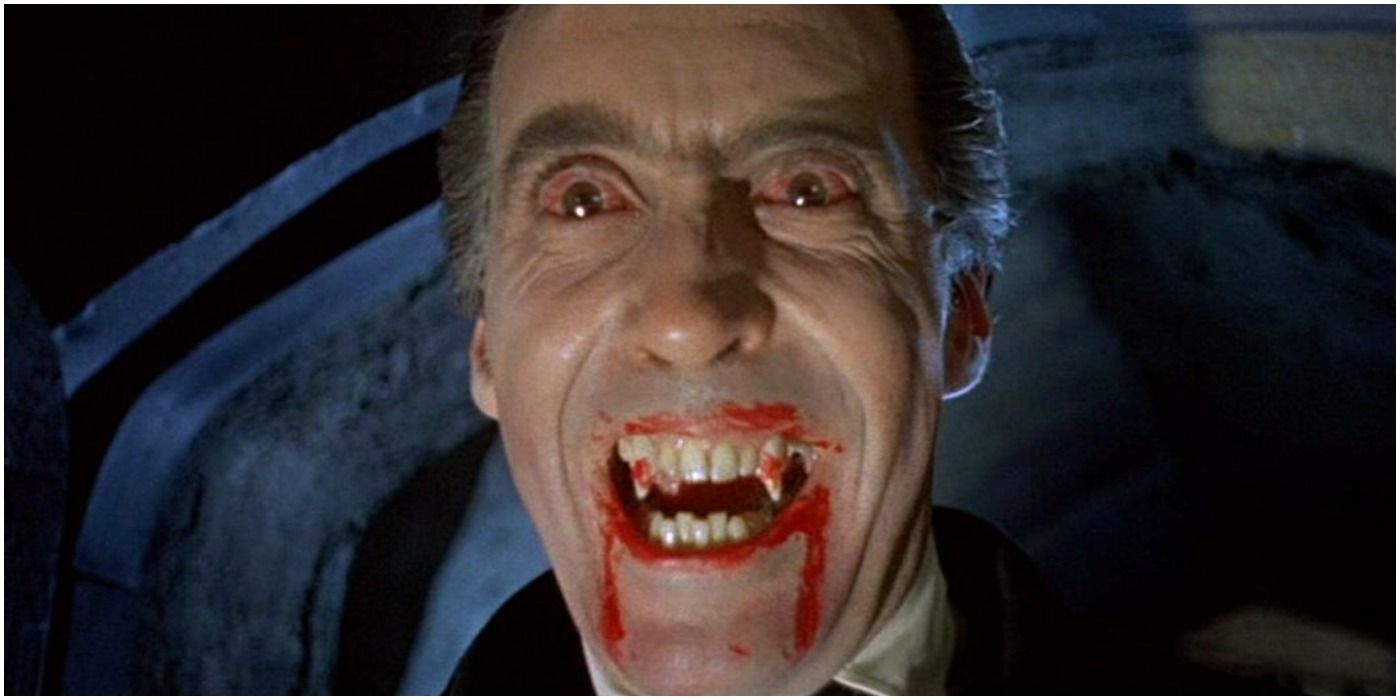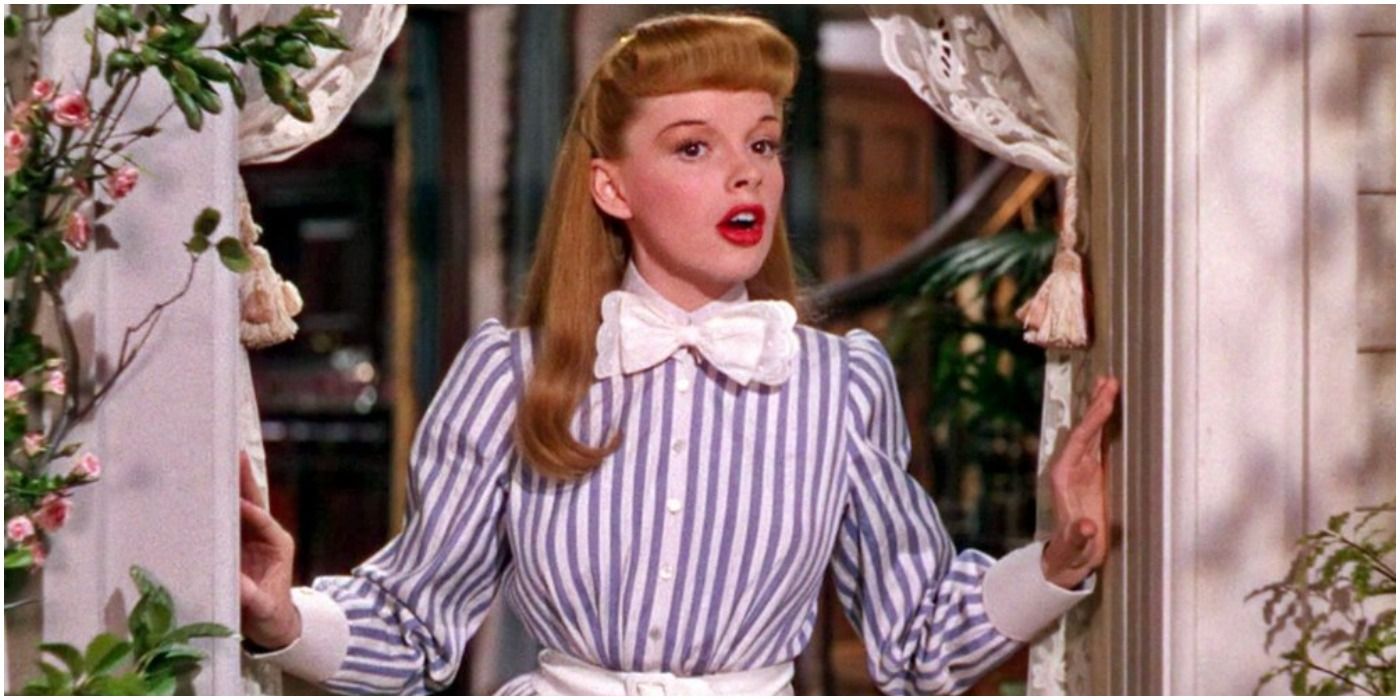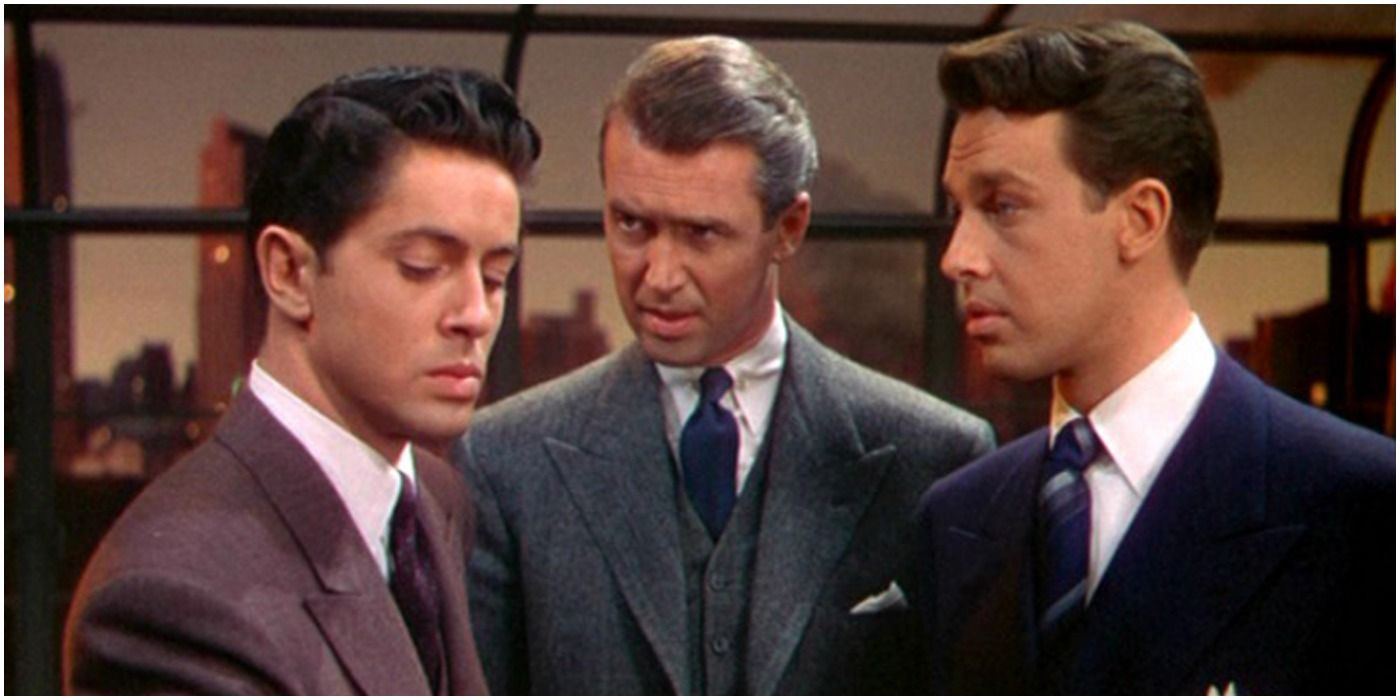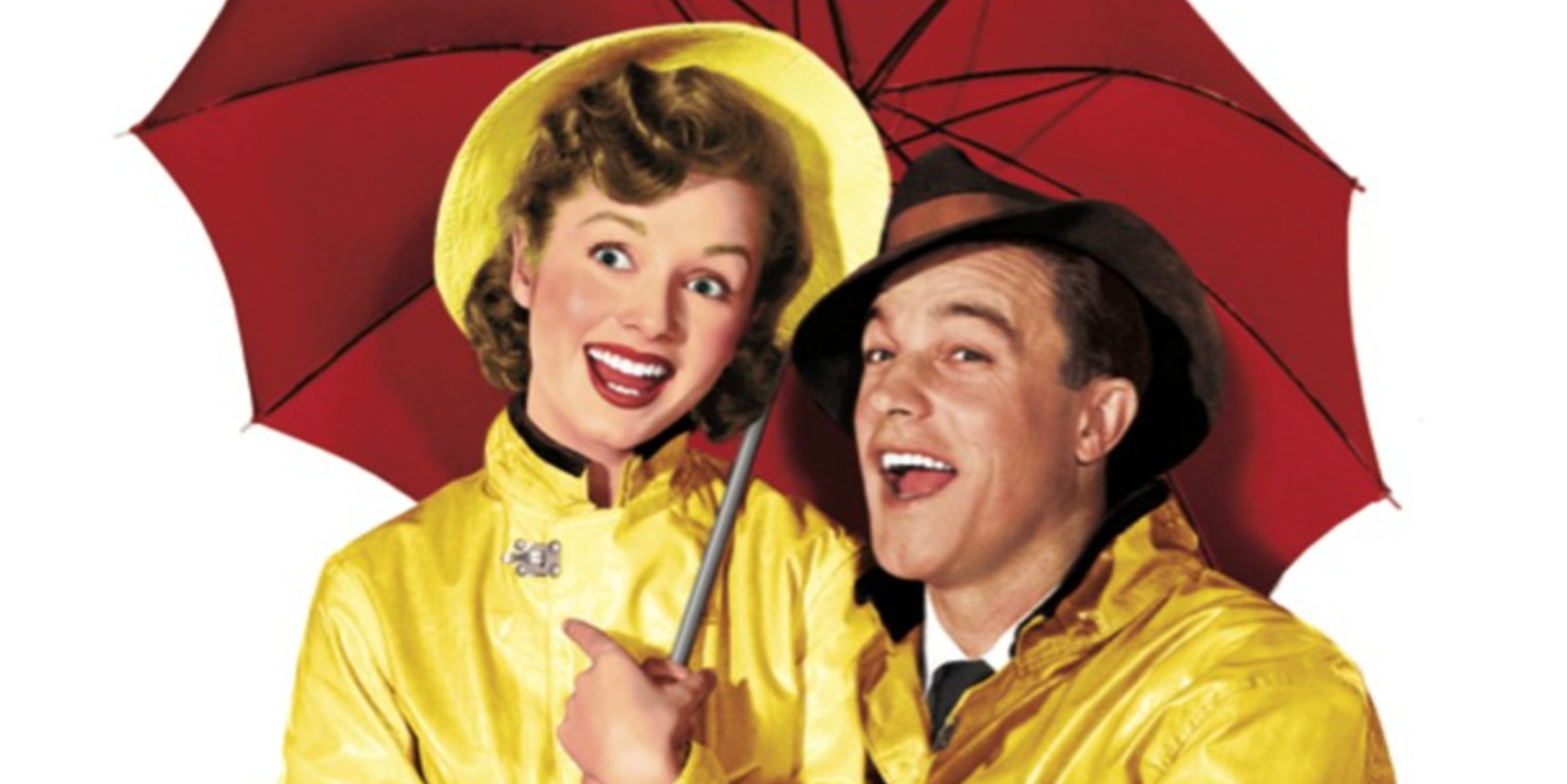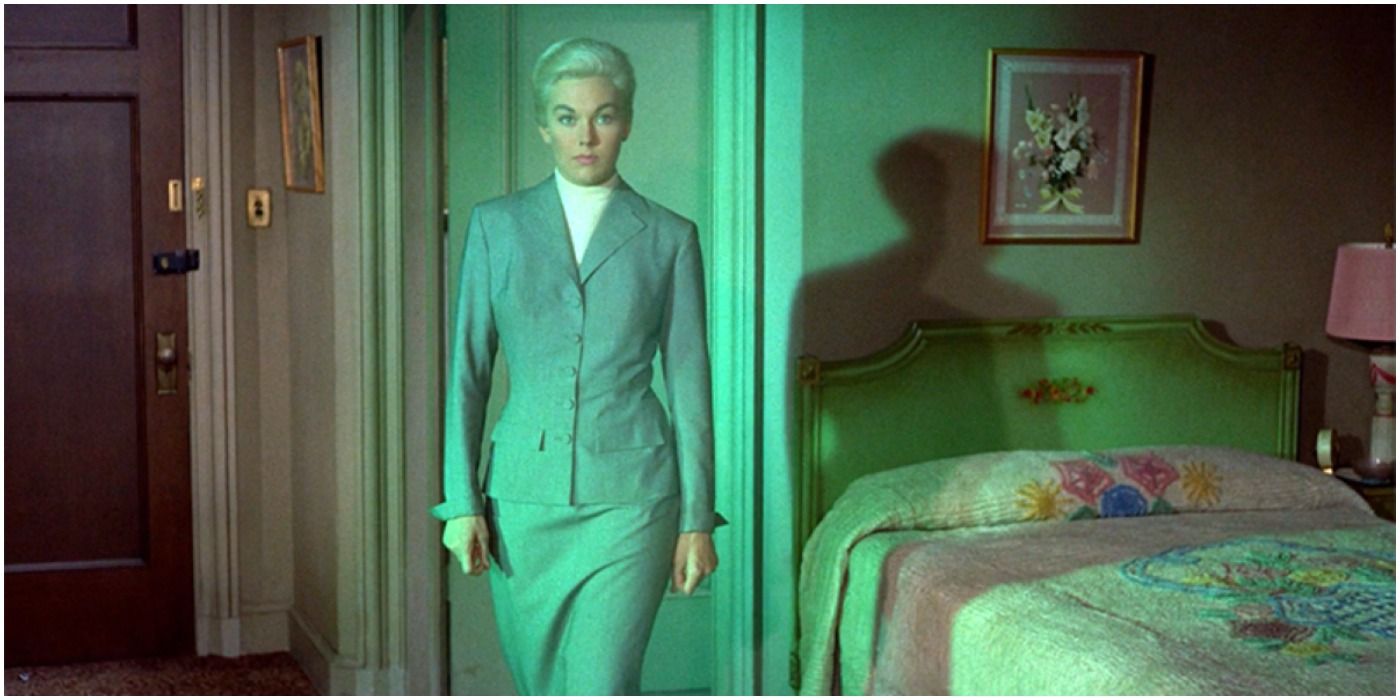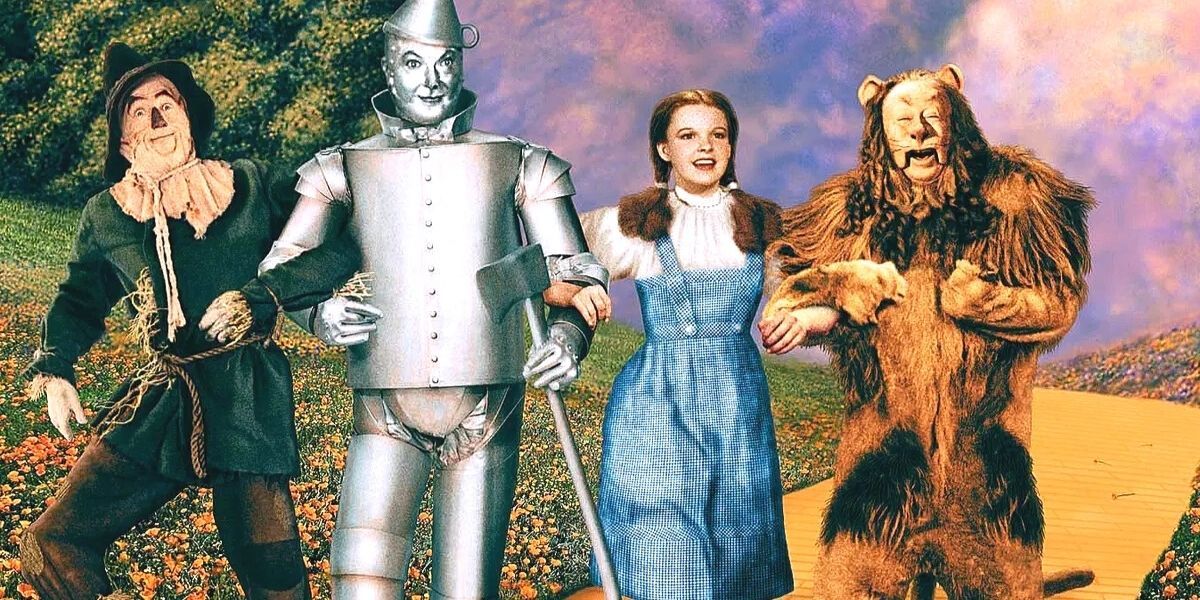Technicolor wasn't the first process that brought color to filmmaking, but it was the one that popularized it. Looking back at the color films from the mid-20th-century Hollywood "Golden Age," all the most famous and iconic ones were made with Technicolor.
Narrowing the view, there are a few Technicolor films that hold up and should be watched by all, both for the sumptuous color palettes and plenty more reasons.
10 The Adventures Of Robin Hood Is The Film Every Later Robin Hood Has Been Chasing
The legend of Robin Hood dates back to the 13th century, but modern retellings trace their lineage to a more recent point: 1938's The Adventures Of Robin Hood.
Co-directed by Michael Curtiz (future director of Casablanca) and William Keighly, the movie made Errol Flynn into a star. This Robin Hood's design is one that has been reused in other renditions, from the Disney, anthropomorphic fox version of Robin Hood to Green Arrow.
9 All That Heaven Allows Is Immaculately Made & Absorbingly Romantic
Some great directors are the ones who excel at making one particular type of movie. For Douglas Sirk, it was romantic melodramas; he directed a string of them in the 1950s which have become classics. The emotions are heightened and colors luscious, yet the artifice is grounded by social commentary.
For the most famous of Sirk's, All That Heaven Allows, the issue is class. Connecticut widow Cary Scott (Jane Wyman) falls in love with gardener Ron Kirby (Rock Hudson), yet their different social status may tear them apart. It's all a bit quaint, but affecting nonetheless.
8 Black Narcissus Shows The Visual Depth Color Afforded Films
One of the most influential partnerships in filmmaking was the British duo Michael Powell and Emeric Pressburger. By 1947, the pair had already made seven films together, but their first foray into color was with Black Narcissus. Adapted from the 1939 Rumer Godden novel, the film spotlights nuns attempting to establish a convent and school in the Himalayas.
Cabin fever and repressed lust fuel tensions among the sisters. The most remembered part of the movie is its majestic matte painting; Black Narcissus was primarily shot in-studio in England, but viewers will be convinced otherwise looking at the scope and beauty of the movie's backgrounds.
7 Cover Girl Is As Pretty As A Film All About Image Should Be
Charles Vidor's musical comedy focuses on Rusty Parker (Rita Hayworth), a showgirl who climbs the stairs of fame after becoming a cover model. Cover Girl was a rounding success upon its debut in 1944 but it hasn't quite left an impact on history—a shame, since it's still rather good.
Hayworth and Gene Kelly have unbeatable charm as the leads, and the movie's aesthetic is candy for the eyes; the costume and production design may be dated, but the colors still pop like they're meant to. Cover Girl is also quite sensual for a movie produced under the Hays Code, with some commentary about how much femininity is performance.
6 Horror Of Dracula Can Still Cause Shivers
Hammer is one of the most important studios in the history of B-Cinema. Though still in operation today, the studio has yet to reach its mid-20th-century heights, when they produced remakes of Universal Monster movies and endless sequels to those remakes. The second of this output, Horror Of Dracula, still holds up.
Featuring Christopher Lee as the Count himself and Peter Cushing as Dr. Van Helsing, the film follows the broad strokes of Bram Stoker's novel—the story unfolds similarly, but the cast size and scope are reduced for budget's sake. Though bloodless by modern standards, Horror Of Dracula can still send a chill up your spine. Christopher Lee's mostly silent turn as Dracula also proves that he didn't need his enchanting voice to be an unforgettable presence.
5 Meet Me In St. Louis Is A Melodious Musical
Set across all four seasons of 1903, Vincente Minnelli's Meet Me In St. Louis focuses on the Smith family of St. Louis, in what may be their last year in the city. Sometimes, a song from a movie's soundtrack equals or eclipses the source film in popularity.
One such example here is the plainly titled "Trolley Song;" while riding a trolley, Esther Smith (Judy Garland) sings of her infatuation with the other passengers as back-up. It's endlessly catchy and incredibly sung by Garland, but it's only one part of a great film.
4 Rope Is An Interesting—Though Not Entirely Successful—Experiment
Rope is one of the more experimental efforts by the Master of Suspense. Two young men Brandon (John Dall) and Phillip (Farley Granger) kill a friend with the titular instrument, then stage a dinner party in the apartment where the killing transpired—all part of their plan to make the murder a "perfect" one.
The film takes place entirely in the apartment and its brief 80-minute runtime unfolds in real time. Hitchcock had wanted to shoot the film in a single take, but the filmmaking technology of 1948 wasn't up to the task. The film thus includes some rather clunky camera work to hide the cuts. Still, Rope's ambition and the values of a Hitchcock make it worth a watch.
3 Singin' In The Rain Still Makes Smiles Decades Later
"Hollywood films about Hollywood" is a type of film so prolific, it might as well be its own genre. One of the oldest and greatest is Singin' In The Rain, co-directed by Stanley Dolan and star Gene Kelly. Released in 1952 but set at the end of the 1920s, Don Lockwood (Kelly) is a silent film star living through the transition to sound on film.
It's a fitting era to focus on, since the film's rapid-fire wit and musical numbers are only possible thanks to sound on film. On a baser level, the film's humor holds up; the failed recording session during the first day of sound shooting on "The Dueling Cavalier" is particularly hilarious.
2 Vertigo Has Some Of The Striking Color Usages In All Of Film
Psycho may reign supreme as the most famous Hitchcock film, but Vertigo has come to enjoy a tad more critical respect. It's also Hitchock's most successful use of color in any of his films. Indeed, two of the most famous scenes in the film, or in any film, attained that reputation thanks to their use of color.
The first, the dream of Scottie (James Stewart) mixes shifting, flashing colors with surreal images to replicate the disorientation of a nightmare. The second has more build-up. Judy's (Kim Novak) apartment rests across from a green light; when her transformation into Madeline is complete, she walks towards Scottie engulfed in the green light, like a ghost materializing from the past.
1 The Wizard Of Oz Is The Dawn Of Color Film
The Wizard Of Oz wasn't the first color film or even the first Technicolor film, but it feels like a watershed moment nonetheless; a signal that color film was here to stay. That the film famously includes both black-and-white and color footage makes it particularly useful as a case study in the transition, as does the color having narrative relevance.
There's the obvious contrast between grey Kansas and the wonderful land of Oz—the latter calls attention to its magic through color, from the Yellow brick road to the Ruby slippers to the Wicked Witch Of The West's inhuman green skin.

